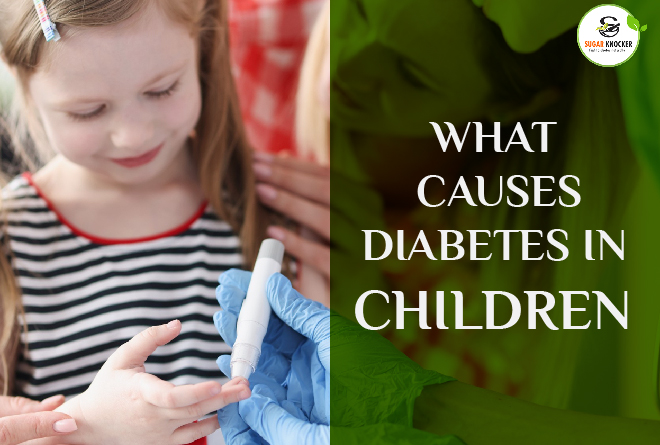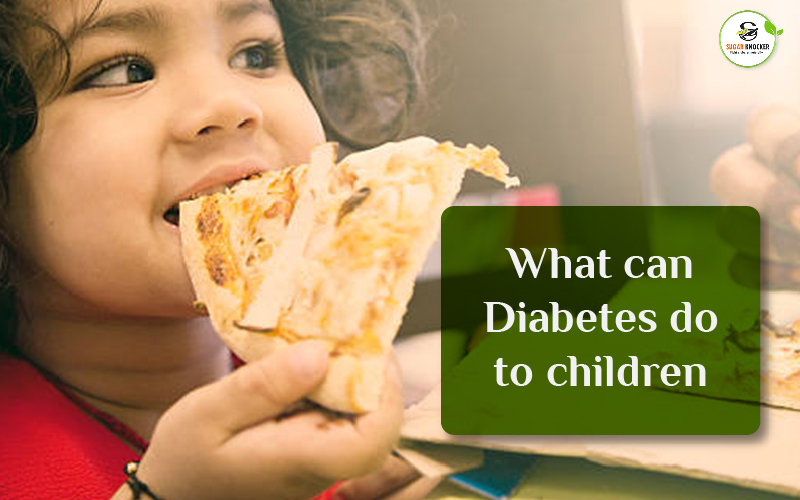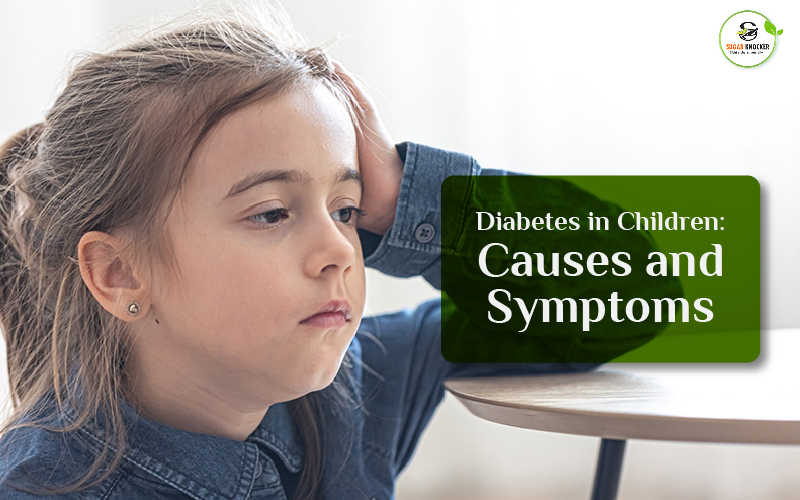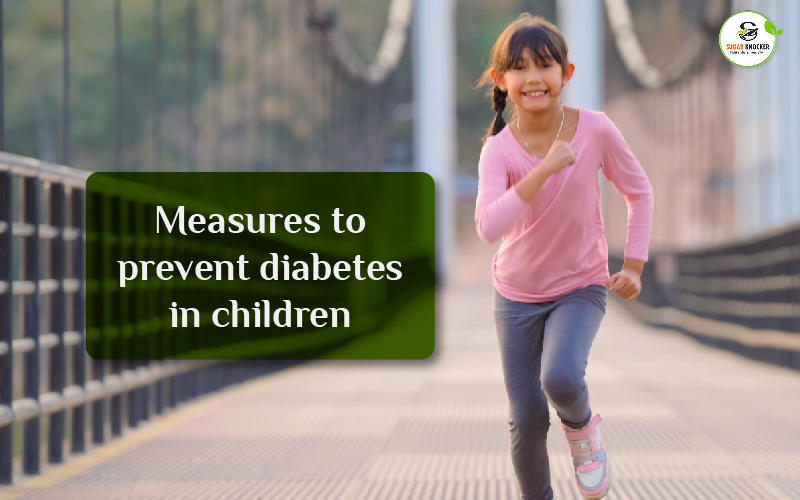
It might be difficult to accept the fact that your child has diabetes, but as they get older, you can assist them to learn to take greater responsibility for their diabetic care. Children over the age of seven generally have the fine motor abilities to begin administering insulin injections to themselves under parental supervision. They can also use inexpensive, chemically treated test strips and a blood sugar tester to monitor their blood sugar many times each day. Additionally, you may have a look at natural cures for type 1 diabetes in children on the internet.
These self-care chores for controlling diabetes in childhood, on the other hand, require your monitoring to ensure that their diabetes is kept in check according to your doctor’s instructions.
If your kid receives too much insulin, their blood sugar levels may drop dangerously low (hypoglycemia). Trembling, a racing heart, nausea, tiredness, exhaustion, and even unconsciousness can all result from this.
The primary symptoms of diabetes in children (weight loss, increased urination, thirst, and hunger) might reappear if your kid takes too little insulin.
While a kid develops healthy diabetes management practices when they are young, it can have a big influence on how they manage their diabetes as they become older. There are also active parent clubs in many areas that discuss, and debate shared problems.
How Diabetes can affect Children

Diabetes is harmful to individuals of all ages, but it is especially harmful to children. Diabetes in children is prevalent these days, and heredity is the most common cause of diabetes in children.
Type 1 diabetes in children is considerably more frequent than type 2 diabetes, according to research. On the other hand, teen children’s rates in both groups are increasing.
Diabetes in teenagers increases the chance of having health problems down the line.
In children, type 1 and type 2 diabetes are two different illnesses that affect how well the body uses insulin. Although type 1 diabetes is more frequent in children and teens, both kinds can affect them.
Type 1 diabetes in children
Type 1 diabetes, commonly known as juvenile diabetes, develops when the pancreas struggles to produce insulin. Sugar cannot move from the bloodstream to the cells with the absence of insulin, resulting in high blood sugar levels.
Type 1 diabetes can strike anyone at any age, from infancy to maturity, although the average age of diagnosis is 13, just when you enter your teenage years. An estimated 85 percent of all type 1 diagnoses are made by people below the age of 20. Long-term insulin uses and blood glucose monitoring, as well as food and exercise restriction, are used as natural cures for type 1 diabetes in children to help stabilize blood sugar levels within the desired range.
Type 2 diabetes in children
Children under the age of 18 are less likely to develop type 2 diabetes, however, it can occur if insulin isn’t functioning correctly. When there isn’t enough insulin, glucose could pile up in the bloodstream. People with type 2 diabetes are more likely to get it as they become older, however, it can also affect youngsters.
Type 2 diabetes rates are raising in tandem with rising juvenile obesity rates. The Prevalence of obesity among children can also have a significant impact on their physical health, emotional and social well-being, and self-esteem. It’s also linked to poor academic achievement and a decrease in the child’s life satisfaction.
Because of genetics or similar lifestyle behaviors, more than 75% of children with type 2 diabetes have a close family with the disease. It has already been proven that having a parent or sibling with type 2 diabetes enhances the risk of acquiring the condition and that it is a cause of diabetes in children.
The individual may require medicine at times. People with type 2 diabetes may frequently control their condition by altering their diet, increasing their physical activity, and keeping a healthy weight.
Symptoms Of Diabetes In Children

Symptoms
In children, teens, and adults, the symptoms of diabetes are the same. While both kinds of diabetes share certain symptoms, there are significant distinctions that can help distinguish them.
In children with type 1 diabetes, symptoms generally emerge rapidly and last only a couple of days. Symptoms of type 2 diabetes appear later. A diagnosis might take weeks, months, or even years to come.
Symptoms of type 1 diabetes in children:
The primary symptoms of type 1 diabetes in children include:
- A tangy smell on the breath
- Heightened thirst and urination
- Starvation
- Abnormal weight loss
- Tiredness
- Disturbance
Weight loss is a common symptom in children before they are diagnosed with diabetes. Infections with yeast present might be a symptom of diabetes in women.
The four T’s that help you recognize the signs and symptoms of diabetes in children are:
- Toilet: The kid may be frequenting using the bathroom, babies may be wearing heavier nappies, or bedwetting may happen after a period of being dry.
- Thirsty: The youngster may be consuming more fluids than normal yet is unable to satisfy his or her thirst.
- Tired: The youngster could be tired more than usual.
- Thinner: It’s possible that the youngster is losing weight.
Symptoms of type 2 diabetes in children:
Given below are the major symptoms of type 2 diabetes in children
- Repeated urination, particularly at night
- Heightened thirst
- Exhaustion
- Abnormal weight reduction
- Irritation around the genitals, potentially due to a yeast infection
- Delayed scar or cut healing
- Impaired vision due to eye dryness
The appearance of dark, velvety patches on the skin, known as acanthosis nigricans, is yet another symptom of insulin resistance.
Polycystic ovarian syndrome (PCOS) is another disease that is commonly linked to insulin resistance, although it is not a symptom of it.
Symptoms to be aware of:
Some children are not diagnosed until their signs have advanced to the point where they are life-frightening. Receiving a diagnosis so late in the game may be deadly.
Do not overlook the signs and symptoms.
The four major symptoms of diabetes in children and adolescents are generally present; however, many children will have only one or two.
If a kid suddenly gets thirsty, fatigued, or urinates more than normal, their parents may overlook the risk of diabetes. Because diabetes is less frequent in very young children, this might also be the case for doctors. They may mistake the indications for those of other, more viral ailments. They may not even be able to diagnose diabetes correctly the first time.
Recognizing the signs and symptoms of diabetes in children is extremely crucial so that a diagnosis and treatment plan can be ascertained as soon as humanly possible.
DKA: A Serious Complication

DKA can occur if a kid does not receive therapy for type 1 diabetes. DKA can also be caused by type 2 diabetes, however, this is uncommon. DKA is a life-threatening illness that needs prompt medical attention.
Insulin levels that are too low prevent the body from using glucose for energy. Instead, it begins to digest stored fat for energy. Ketones, which are highly toxic in large concentrations, are formed on the basis of this process. DKA occurs when these chemicals pile up in the body, causing the body to become acidic.
DKA can be avoided with early diagnosis and appropriate diabetes control, although this is not always achievable. DKA is more prevalent in children who have had their type 1 diabetes diagnosis delayed due to an erroneous diagnosis. In a 2008 study of 335 children under the age of 17 with novel type 1 diabetes, it was discovered that more than 16% of the time, the original diagnosis was erroneous.
Type 2 diabetes complications

Type 2 diabetes seems to progress quicker in young individuals than in adults if not treated.
Younger people also appear to have a higher chance of problems early in life, such as renal and eye illness.
Hypertension and cholesterol levels are also much more common, raising a person’s chance of developing blood vessel disease.
Obesity is commonly linked to type 2 diabetes in children, which may exacerbate these concerns. Obesity impairs the body’s capacity to utilize insulin, resulting in high blood sugar.
As a response, early detection of type 2 diabetes in children and attention to the treatment of childhood and teenage abdominal obesity is important. This might involve encouraging children to consume a well-balanced diet and exercise on a regular basis.
Preventive Measures for Diabetes in Children

Type 1 diabetes cannot presently be prevented, while type 2 diabetes is generally avoidable.
The following steps can help prevent type 2 diabetes in children:
Eat a balanced diet: Obesity increases the chance of insulin resistance, which increases the risk of developing diabetes.
Stay active: Staying physically active helps control blood pressure and lowers insulin resistance.
Keep sugary meals and beverages to a minimum: Consuming a lot of sugary meals might contribute to weight gain and issues with insulin function. Type 2 diabetes can be avoided by consuming a nutrient-dense, well-balanced diet rich in vitamins, fiber, and unprocessed foods.
What kind of diet should diabetic youngsters follow?
Diabetics can consume the same foods as everyone else: it’s a misconception that they can only eat sugar-free foods. Diet is, nevertheless, a critical issue for any diabetic, especially young diabetics.
Your child must eat a well-balanced, nutritious diet rich in complex carbs and fiber.
Though you may have to plan your family’s meals around your diabetic relative, this should not be an issue. Anyone could benefit from a healthy diet.
The amount of food your kid can consume is completely dependent on his or her size and stature. It is up to you and your child to learn how their bodies react to various meals and to ignore the ones that are harmful to them.
While sugary food should be avoided at all costs, it does not have to be completely avoided, and it is normal to have sugary cravings at times, there is no harm in fulfilling them, but make sure it is not too much.
What kind of activity should diabetic youngsters do?

Exercising is the second most essential element in managing type 2 diabetes, and it is crucial for all diabetic children. Children with diabetes should strive to work out every day, according to suggestions. Physical exercise, on the other hand, decreases blood sugar levels, something parents should be mindful of.
It may be essential for your kid to decrease their insulin dose, as activity can dramatically lower blood sugar levels and cause hypoglycemia. Your youngster should be around sugar when doing strenuous activities.
Physical exercise also has an impact on how much food your youngster can consume.
Conclusion
Childhood and adolescent diabetes rates are on the rise. Type 1 diabetes is far more frequent in children and teenagers than type 2 diabetes, although both are on the rise. While diabetes itself is a serious ailment, it can also lead to other serious ailments later in life when your child grows up, which is why managing diabetes in children is as important as managing diabetes in adults.
In most situations, a healthy diet, frequent exercise, and medicines can help patients control the symptoms of type 1 and type 2 diabetes naturally.
Individuals with diabetes can live happy and healthy lives if they keep their disease under control. It’s important to have someone break down every aspect of diabetes for you and your child to keep their diabetes under control, which is why Girish Banvi, a certified diabetic educator, can help you cure diabetes naturally. Girish is a Vietnamese medical board-certified educator and entrepreneur who began his career as a supplier for ayurvedic medicine manufacturers and eventually started counseling diabetics all over the world and assisting them in naturally managing and reversing diabetes. To book a consultation, please visit https://girishbanvi.com/?page=contact
